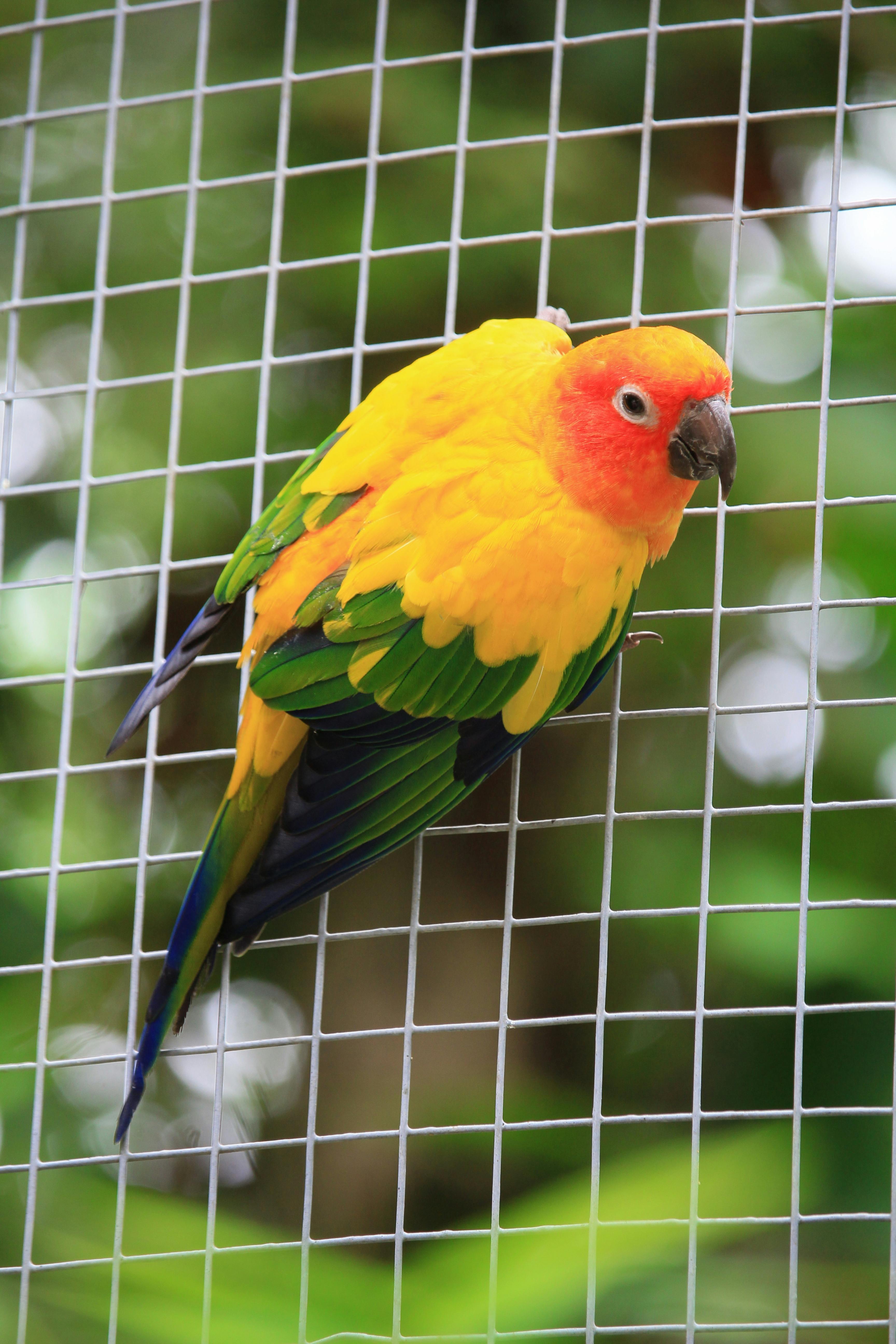Top 7 Ways to Properly Care for Your Robo Dwarf Hamster in 2025

Welcome to our ultimate guide on how to properly care for your robo dwarf hamster in 2025! As these adorable little furries gain popularity as pets, understanding their unique needs is essential for any prospective or current hamster owner. From providing the right kind of environment to ensuring they receive the proper nutrition, each aspect of hamster care should be thoughtfully considered.
This article will dive into the most effective methods of dwarf hamster care, covering crucial aspects such as habitat setup, diet, social needs, and exercise. By the end of this guide, you will have a comprehensive understanding of how to create a happy, healthy home for your furry companion. Let’s explore the best practices to ensure your pet hamster thrives!
1. Setting Up the Ideal Dwarf Hamster Habitat
The first step in caring for your robo hamster is creating a suitable habitat. Hamsters are burrowing animals, so their cage should simulate a natural environment to keep them comfortable and engaged. Start off by selecting a spacious hamster cage that offers enough room for your pet to explore, play, and exercise.
Choosing the Right Hamster Cage
When selecting a hamster cage, look for one that has multiple levels, tunnels, and plenty of space for bedding. The cage should have a solid floor instead of a wire base to prevent injuries. Additionally, consider a cage with good ventilation to keep your hamster healthy. Ensure the enclosure is escape-proof and easy for you to maintain.
Setting Up the Cage
Once you have the right cage, it’s time to set it up. Begin by adding a suitable bedding material, such as aspen shavings or paper-based bedding, which is safe and absorbent. Avoid cedar and pine shavings as they can be harmful to hamster health. Make sure to fill the bedding at least 3 inches deep to allow for burrowing. Creating tunnels and hiding spots will give your hamster a sense of security.
Decoration and Enrichment
Enhancing your hamster’s environment is critical for their enrichment. Include a variety of toys like chew toys, climbing structures, and exercise wheels for physical activity. Interactive playtime with accessories designed for hamsters can help prevent boredom and promote their well-being. Rotate toys regularly to keep your pet engaged and curious about their habitat.
Ensuring a Safe Environment
Adding an enclosed area in the cage can provide your robo hamster a place to retreat and relax. Be mindful of the humidity and temperature in the room where their cage is located; it should not be overly hot or cold. Avoid placing the cage in direct sunlight, as this can overheat the habitat and stress your pet. Check that there are no safety hazards near the cage to prevent any accidents.
Regular Cage Maintenance
Cleaning your hamster’s habitat is crucial for their health. Regularly spot clean the bedding and remove any soiled areas, while a complete clean should occur weekly. This will prevent odors and bacteria from forming and will provide a comfortable living environment for your hamster.
With the ideal habitat established, let’s move on to understanding the best practices for feeding your dwarf hamster.
2. Providing a Balanced Diet for Your Dwarf Hamster
Feeding your pet hamster a nutritious and balanced diet is essential for its overall health. Dwarf hamsters have specific dietary requirements, and following these guidelines will help ensure their longevity and vitality.
Best Foods for Robo Hamsters
The foundation of a dwarf hamster's diet consists of high-quality commercial hamster pellets or mixes that contain a variety of seeds, grains, and vegetables. Foods specifically formulated for dwarf hamsters are ideal since they meet their unique nutritional needs. Always look for products that are specifically labeled for hamsters rather than general rodent mixes.
Healthy Treats and Supplements
In addition to their staple diet, you can reward your robo hamster with healthy treats. Consider offering small amounts of fresh fruits and vegetables, such as apple slices, carrots, and spinach. Always make sure these are appropriately sized to prevent choking. Limit sugary or fatty treats to prevent obesity.
Feeding Schedule and Portion Control
Hamsters are nocturnal animals, so establish a feeding schedule that aligns with their active hours during the evening. Typically, you can offer food once in the early morning and again in the evening, allowing them to nibble throughout the day. Be mindful of portion control; a tablespoon of pellets or mix is sufficient for a single feeding, ensuring they don’t overeat.
Water Needs for Hamsters
Fresh drinking water is absolutely critical for your hamster’s health. Always provide clean water in a water bottle with a sipper tube to prevent contamination. Change the water daily to ensure it remains fresh, and regularly check for leaks or clogs to maintain hydration.
Common Feeding Mistakes to Avoid
Avoid the temptation to feed your hamster more than the recommended portion size, as this can lead to obesity and health issues. Steer clear of citrus fruits and foods high in sugar and salt, which can be harmful. Lastly, always introduce new foods gradually, as sudden diet changes can upset their digestive systems.
Now that you know how to establish a healthy diet for your dwarf hamster, let’s take a closer look at their social and enrichment needs.
3. Understanding Your Hamster's Social Needs
A neglected aspect of dwarf hamster care is understanding their social needs. While hamsters may seem independent, they thrive on interaction and mental stimulation.
Interacting with Your Robo Hamster
Regular interaction with your pet hamster can help develop a strong bond. Spend time outside of their habitat, allowing them to explore under supervision. Gently handle them every day to help them become comfortable with human interaction, which is key to reducing stress.
Socialization and Playtime
Socialization is crucial, especially for young hamsters. Encourage playtime during evening hours when they are most active. Utilize interactive toys to engage their curiosity and help them burn off excess energy. Playtime is also essential for promoting a healthy weight and happiness.
Monitoring Behavior
Robo hamsters can exhibit unique social behaviors. It's essential to monitor these closely. They're known for being active and exploratory while being relatively solitary compared to other breeds. If you notice your hamster becoming overly aggressive or withdrawn, it may need more social interaction or behavioral adjustments.
Choosing Suitable Playmates
While hamsters can coexist peacefully, some species may fight if housed together. Robo hamsters are known to generally be less aggressive, yet it’s wise to observe their interactions closely if you consider having more than one. Always separate them if any signs of aggression occur.
Benefits of Social Interaction
Investing time in building a relationship with your hamster enriches their life. Studies show that hamsters with regular interaction tend to be less stressed and more adept at problem-solving and exploring their environment. Understanding your hamster's social needs is vital to achieving a balanced health.
With social needs addressed, let’s dive into the importance of keeping your robo hamster active.
4. Ensuring Adequate Exercise for Your Dwarf Hamster
Equipping your hamster with the means to exercise is vital for maintaining their health and happiness. Dwarf hamsters are naturally active creatures and require physical activity to mimic their wild behavior.
Best Practices for Hamster Exercise
One of the easiest and most enjoyable ways to help your hamster stay active is by providing an exercise wheel. Ensure the wheel is large enough for your robo hamster to run comfortably without arching their back. A silent wheel can prevent disturbances during nighttime activities.
Interactive Hamster Toys
Another great way to promote physical activity is by incorporating interactive toys into the cage. Consider obstacle courses, tunnels, and chew toys that encourage climbing and crawling. Provide a safe area outside the cage where they can explore in a controlled environment as well.
Alternative Exercise Ideas
Encourage playtime outside the cage in secure spaces, such as during controlled floor time in a hamster-proofed area. Create tunnels and mazes with safe objects, allowing your hamster to explore while honing their natural instincts. Be attentive and remove any hazards that could harm them during exercise.
Signs of Sufficient Exercise
Watch your hamster for signs of engagement and fitness. Active hamsters tend to be curious, agile, and less prone to obesity. If your hamster appears lethargic, consider expanding their environment and increasing their playtime to enhance their activity levels.
Managing Weight and Health
Regular exercise is essential for your hamster’s weight management and overall health. Incorporate various activities to keep the exercises engaging. Should you notice any health concerns related to their activity levels, consult a veterinarian for advice.
With ample exercise and engagement, let’s explore grooming practices vital for their care.
5. Grooming Your Robo Dwarf Hamster
Regular grooming ensures your hamster stays clean and healthy. While hamsters are generally good at grooming themselves, assistance is often needed to maintain proper hygiene.
Handling and Social Adaptation
Regular handling allows you to build a rapport with your robo hamster, making grooming less stressful for both of you. Begin by gently holding them for short periods, gradually increasing the duration as they adapt to your presence. This familiarity will facilitate easier grooming sessions.
Bathing and Cleaning
Most hamsters do not require regular baths, as they groom themselves naturally. However, if your hamster becomes exceptionally dirty, you can use a damp cloth to clean them gently. Avoid using soap or shampoos, as they may harm their sensitive skin.
Nail Trimming Essentials
Nail maintenance is essential; long nails can cause discomfort and even injuries to their feet. Inspect your hamster’s nails regularly and trim them as needed. Utilize a pair of small animal nail clippers, trimming only the pointed tip while avoiding the quick to prevent bleeding.
Ear and Eye Care
Pay attention to your hamster’s ears and eyes to ensure they remain clean. If you observe any discharge or irritations, it may indicate health issues that require veterinary attention. Regular checks will help prevent more severe problems.
Common Grooming Mistakes
Don’t over-bathe your hamster, as this can strip the natural oils from their skin. Additionally, avoid forcing your hamster into the grooming process; this could create stress. Instead, induce a calm atmosphere to foster a positive experience for your pet.
As we explore grooming, it naturally leads to the importance of monitoring hamster health.
6. Keeping Your Hamster Healthy and Happy
Monitoring your hamster’s health and well-being will ensure they lead a long and happy life. A proactive approach can help detect problems early and improve your hamster's quality of life.
Regular Health Check-ups
Schedule regular visits to a veterinarian experienced in treating small animals. Vet consultations are crucial for preventive care, vaccinations, and overall health assessments. Keep a record of any health concerns for discussion during appointments.
Signs of Common Health Issues
Hamsters can exhibit various health problems, from respiratory issues to dental disorders. Be vigilant and observe changes in behavior, appetite, and activity levels. Early detection of symptoms will enable timely intervention and treatment.
Feeding Habits and Their Impact
A proper diet is fundamental to your hamster’s health. Monitor your hamster's eating habits to ensure they are consuming the right amounts. A poor diet can lead to obesity and health complications. Adjust the food and treats accordingly based on their lifestyle.
Emotional Well-Being
Pay attention to your hamster's mental well-being. Ensuring they have ample opportunities for socialization and stimulation will greatly enhance their quality of life. Engaging in playtime can prevent stress and encourage happiness.
Recognizing Pain or Discomfort
Hamsters are known for hiding their discomfort. Therefore, observe for signs such as excessive grooming, reduced activity, or changes in behavior. Should you suspect inadequado health or distress, consult a veterinarian immediately to prevent complications.
As we conclude our health-focused section, let’s look at how playtime can enhance your robo hamster's experience.
7. Enhancing Playtime for Your Robo Dwarf Hamster
Fun and engaging playtime are fundamental components of a fulfilling life for your dwarf hamster. Creating dedicated playtime can lead to interaction, bonding, and healthy exercise.
Creating a Safe Play Area
Design a hamster-proofed space for supervised play. Clear any dangerous items, cords, or toxic plants. Use an enclosed area or a playpen to allow for freedom while minimizing risks. This will encourage your hamster to explore and engage actively.
Interactive Games and Toys
Incorporate various interactive games and toys into their space to stimulate your hamster. Invest in tunnels, mazes, and hamster-safe balls that allow exploration and activity while providing mental stimulation. Rotate toys to prevent boredom.
Using Positive Reinforcement
During playtime, use positive reinforcement such as treats to encourage desired behaviors. This will not only strengthen your bond but also foster confidence to explore new activities. Remember to reward them for completing tasks or playing with toys, enhancing their enthusiasm.
Engaging with Your Hamster
Use gentle methods to engage your hamster; allow them to explore you as well. Encourage sniffing and interaction while providing opportunities for them to freely navigate their surroundings. Remember, each interaction nurtures their growth and helps strengthen your relationship.
Identifying Play Reactions
Observe your hamster's reactions during playtime to gauge their level of enjoyment and comfort. Energetic behavior indicates they are having fun and are engaged. If they appear disinterested, consider changing the environment or toys to spark their curiosity.

Q&A: Common Questions About Robo Dwarf Hamster Care
What is the lifespan of a robo dwarf hamster?
The average lifespan of a robo dwarf hamster is typically around 3 to 4 years. However, with proper care and attention, some hamsters may live longer.
How often should I clean my hamster's cage?
Spot clean the cage daily by removing any soiled bedding, and perform a complete cage clean every week or as needed to maintain hygiene.
Can robo dwarf hamsters live together?
Though some dwarf hamsters can live together, it’s essential to monitor their interactions closely. It’s best to house them in pairs from a young age to minimize territorial disputes.
What are the best foods for feeding a robo dwarf hamster?
Feed your hamster high-quality commercial hamster pellets, fresh fruits, and vegetables in moderation, and avoid foods high in fat and sugar.
How can I tell if my hamster is happy?
A happy hamster will exhibit active play, curiosity, and social behaviors. They will enjoy exploring their habitat and interacting with you during playtime.
Conclusion
Caring for a robo dwarf hamster in 2025 requires attention to their diet, housing, and emotional needs. By following these seven essential strategies, you can ensure that your pet hamster lives a long, healthy, and fulfilling life. Remember, engaging playtime, socialization, and regular health checks will foster a positive and thriving environment for your furry friend.
